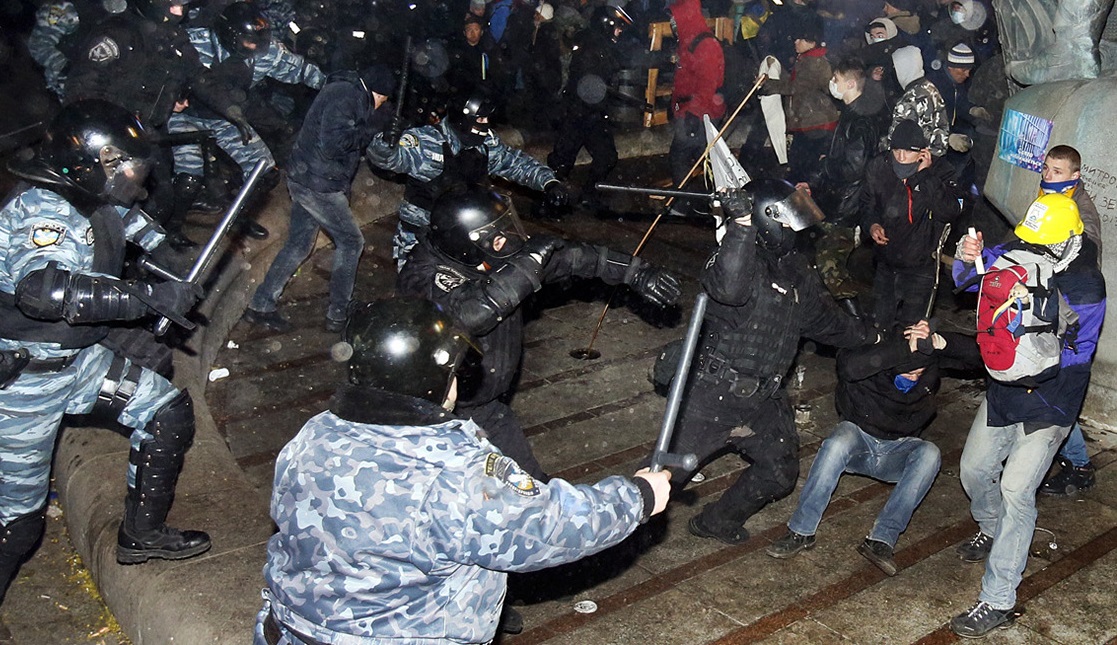The Ukrainian Front, which originated in Kharkiv and supports the Yanukovych regime, has taken to wearing Russia’s St. George ribbon. Do they really understand what they’re wearing, or why?
The St. George ribbon originated in the reign of tsarist Russia’s Catherine II. It was an addition to the Order of St George, which was founded in 1769 during a Russo-Turkish war that solidified Russian control over southernmost Ukraine and five years before Katherine’s razing of the Zaporizhzhia Sich. The Order was discarded in 1917 following the Soviet revolution.

However, as the Soviet need for a richer military symbolic grew during World War II, the Tsarist trappings returned, first in 1941 with newly reconstituted Guard units utilizing the Order’s distinctive orange and black ribbon, and then in 1943 with the Order of Glory. Most famously, the ribbon was used in decorations such as the Medal for the Victory over Germany in the Great Patriotic War 1941–1945, which was awarded to all who served in the war. It was as a reward for bravery in combat and for liberating fatherland from foreign invaders.
The ribbon has its modern use as well. In August 2000, the Russian Federation brought back the Order of St. George as its top decoration. Moreover, the St. George ribbon has been used since 2005 as a symbol of commemorating the victory over Germany and is seen frequently around May 9 Victory day celebrations. However, it is not used in any formal Ukrainian military decorations.
But now, the Kharkiv governor and mayor have assembled the so-called Ukrainian Front to support Viktor Yanukovych and his administration. The group consists mostly of titushky (hired thugs) and they have been seen wearing the ribbon of St. George.
The organizers of the titushky are alleging that the anti-government protesters, who stand against the violation of human rights in support for freedom and democracy in Ukraine, are Neo-nazis and fascists from Western Ukraine. They use the St. George ribbon to justify their actions as a struggle against the new generation of fascists.
A few of the ‘clean-up crew’ on Khreshchatyk in Kyiv on 8 February wore it, too. So these ‘defenders of Kiev (Russian spelling)’ get bussed in from the surrounding towns and are hired for a couple of hours to make noise and wear ribbons. You can see the lucky ones getting paid on the squares and metro stops not far from Maidan when they’re done.
But when they leave Kyiv, they leave mostly Kyivans behind the barricades. The lists of missing protesters show mostly Kyiv residents. And the original protests, the first beaten and broken students – from Kyiv. Shared values of decency – feeding the militia, shaming and not torturing those captured – and outrage at the excesses of the Yanukovych administration have brought volunteers from across the country, and not only western Ukraine. It does beg the question – who is the invader here?
And maybe, we’ve come full circle as the descendants of the kozaks (Cossacks – Russian translation) who fought against Katherine’s encroachment on Ukraine in the 18th Century stand with Kyivans on Maidan and Hrushevksy Street against people who may unwittingly wear symbols of Moscow’s imperialism but certainly discredit their forebears’ more recent defense of Kyiv.







